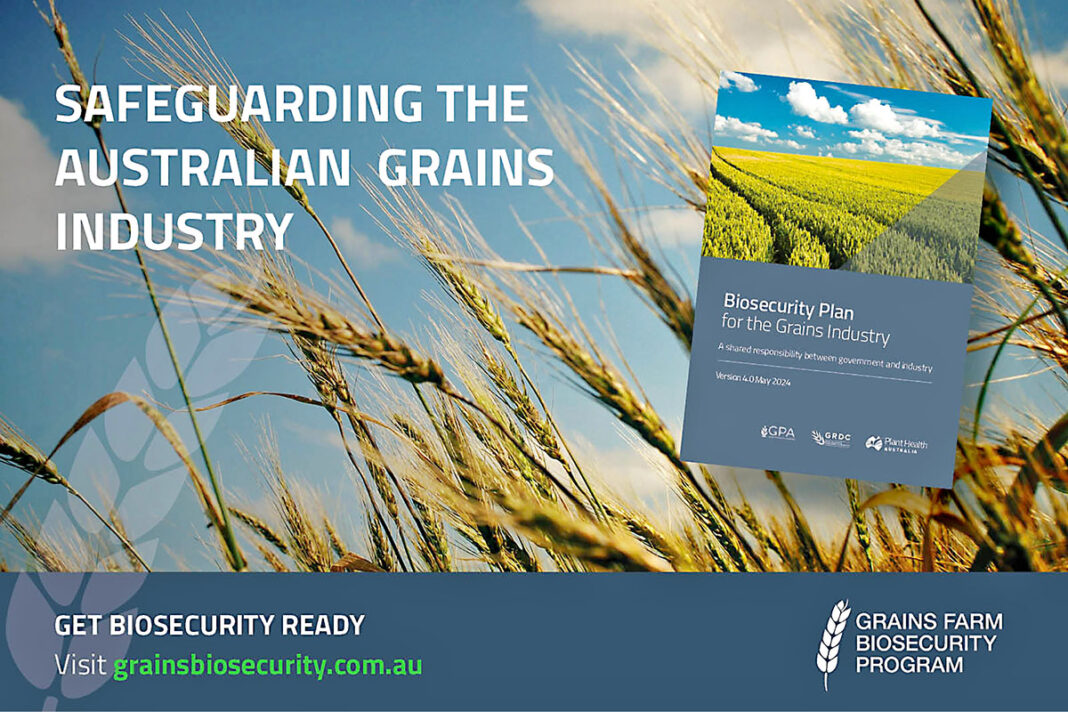Anew plan has been unveiled to strengthen biosecurity protections and further safeguard the $32b Australian grains industry, by delivering a range of targeted activities and investments.
The Australian Grains Industry Biosecurity Plan was launched by grains industry leaders at the Australian Grains Industry Conference, in Melbourne last week.
The plan will give industry, governments and stakeholders the expert framework and focus needed to help prevent, prepare for, and respond to, grains-specific biosecurity incursions.
Developed in collaboration with industry leaders and biosecurity experts, more than 1300 different plant pests and disease threats have been identified in the Plan.
It also details the specific programs and activities needed to take proactive action and protect growers, industry and the economy, from these biosecurity threats.
Plant Health Australia (PHA), the coordinator of the Australian plant biosecurity system, has led the process, supported by Grain Producers Australia (GPA) in consultation with other industry leaders, grains industry stakeholders and government partners, to include their expertise in the plan’s development.
Built on the principles of shared ownership and responsibility, a focus on strong collaboration and engagement will continue throughout the life of the plan, to ensure success.
GPA Chair and WA grain producer Barry Large said the plan’s launch was a good news story for all Australian grain producers, and the wider grains industry and economy – and the start of a longer journey, to increase biosecurity capacity and capability.
“We know Khapra Beetle is public enemy number one for our industry, with a potential $15b plus hit to the economy – and that’s just one of many grains-related biosecurity challenges we face,” he said.
“This plan, however, will implement the projects and initiatives we need to fight back against these pests and diseases that pose a constant threat to our livelihoods.
“Everyone will benefit from this new uplift in investments, actions and activities to help strengthen biosecurity protections specific to the grains sector – not just growers.
“This also demonstrates that we’re talking the talk and walking the walk on biosecurity by harnessing our resources and being proactive, to further protect the profitability and sustainability of our industry.”
PHA National Manager Preparedness and RD&E Stuart Kearns said governments, industry, researchers and the public were beneficiaries of a strong and prepared biosecurity system.
“This biosecurity plan is an implementation plan at its core,” he said.
“We have built on past efforts to identify current and potential plant pests with a practical guide that has identified where we need to focus surveillance, education and mitigation.
“This will ensure both industry and government are able to make informed decisions about the growing biosecurity threat in Australia.
“The plan includes current initiatives and highlights areas requiring further work and will be consistently updated to assess progress.”
Mr Kearns said the plan will be regularly reviewed and updated throughout its life to reflect activities, outcomes and newly identified issues.
GRDC Managing Director Nigel Hart said biosecurity was a critical cross industry issue that needed a united and collaborative approach from the grains sector.
“GRDC has long been an advocate of research, development and extension investments that support and inform improved biosecurity practices and effectively equips the grains industry to prepare and guard against the very real threat exotic pests and diseases pose to agriculture,” Mr Hart said.
“This all-of-industry plan is another important tool in ensuring we have the systems in place to allow us to be responsive and act in a timely way – two critical factors that can be the difference between effective control and devastation of an industry.




